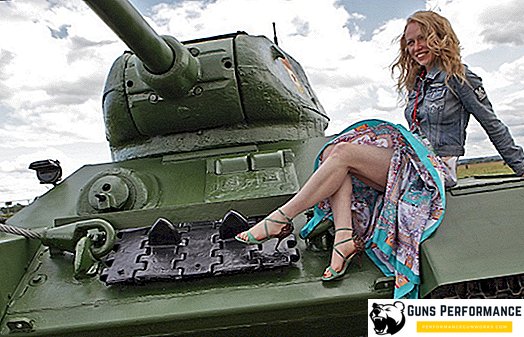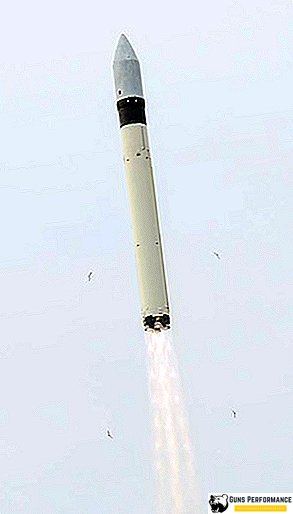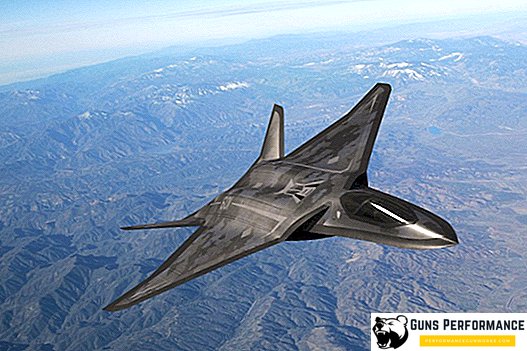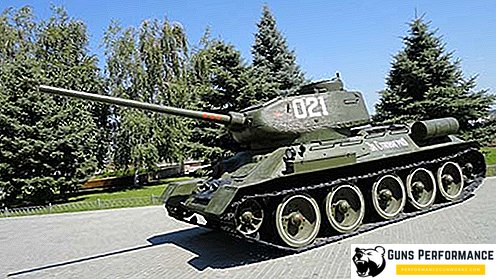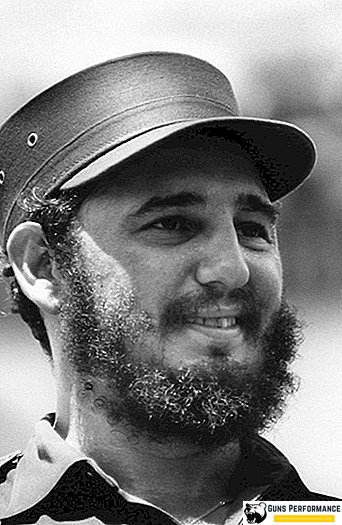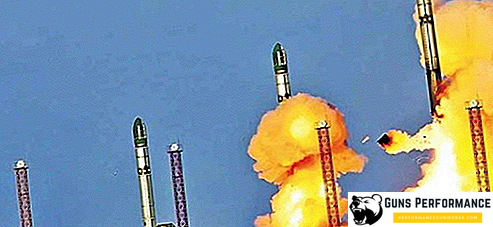
The First World War can hardly be called successful for Russia - huge losses, retreats and deafening defeats haunted the country throughout the conflict. As a result, the Russian state did not withstand the military tension, a revolution began that destroyed the empire and led to the death of millions. However, in this bloody and ambiguous era there are achievements that any citizen of modern Russia can be proud of. The creation of the first serial multi-engined bomber in the world is definitely one of them.
More than a hundred years ago, on December 23, 1914, the last Russian emperor Nicholas II approved the decision to create a squadron (squadron) consisting of heavy multi-engined Ilya Muromets aircraft. This date can be called the birthday of domestic long-range aviation and the most important milestone in the global aircraft industry. The creator of the first Russian multi-engine aircraft was the ingenious designer Igor Ivanovich Sikorsky.
"Ilya Muromets" is the common name for several modifications of multi-engined aircraft, mass-produced at the Russian-Baltic carriage factory in St. Petersburg from 1913 to 1917. During this period, more than eighty cars were made, a lot of records were set on them: in flight height, carrying capacity, time spent in the air and the number of passengers carried. After the start of the Great War "Ilya Muromets" turned into a bomber. Technical solutions first used on Illya Muromets for many decades to come determined the development of bomber aircraft.
After the end of the Civil War, Sikorsky’s airplanes were used for a while as a passenger. The designer himself did not accept the new power and emigrated to the USA.

The history of the aircraft "Ilya Muromets"
Igor Ivanovich Sikorsky was born in 1882 in Kiev in the family of a professor at Kiev University. The future designer received his education at the Kiev Polytechnic Institute, where he joined the Aeronautical Section, which united enthusiasts of the nascent aviation. The section included both students and university professors.
In 1910, Sikorsky lifted into the air the first single-engine aircraft of his own design C-2. In 1912, he received a design position at the Russian-Baltic Carriage Works in St. Petersburg - one of the leading machine-building enterprises of the Russian Empire. In the same year, Sikorsky set about creating the first multi-engine experimental aircraft S-21 “Russian Knight”, which took off in May 1913.

The success of the designer did not go unnoticed: an unprecedented aircraft was demonstrated to Emperor Nicholas II, the State Duma issued 75 thousand rubles to the inventor, and the military awarded the Order of Sikorsky. But, most importantly, the military ordered ten new aircrafts, planning to use them as scouts and bombers.
The first aircraft of the "Russian Knight" was lost as a result of a ridiculous accident: a motor fell on it, falling off an airplane flying in the sky. And the latter managed to land safely and without an engine. Such were the realities of aeronautics in those days.
"Vityaz" decided not to recover. Sikorsky wanted to create a new air giant, whose name was given in honor of the epic Russian hero - Ilya Muromets. The new aircraft was ready in the autumn of 1913 and its size, and its appearance and size really hit contemporaries.
The length of the hull, "Ilya Muromets" reached 19 meters, wingspan - 30, their area (on different versions of the aircraft) - from 125 to 200 square meters. meters The weight of an empty airplane was 3 tons, it could be in the air up to 10 hours. The aircraft developed a speed of 100-130 km / h, which was quite good for that time. Initially, "Ilya Muromets" was created as a passenger plane, there was light, heating and even a bathroom with a toilet in its cabin - unheard of items for aviation of that era.

In the winter of 1913, trials began, "Ilya of Murom" for the first time in history was able to lift into the air 16 people and the airfield dog Shkalik. The weight of the passengers was 1290 kg. To convince the military of the reliability of the new machine, Sikorsky flew from St. Petersburg to Kiev and back.
In the early days of the war ten squadrons were formed with the participation of heavy bombers. Each such detachment consisted of one bomber and several light aircraft, the squadron was directly subordinate to the headquarters of the armies and fronts. By the beginning of the war were ready four aircraft.
However, it soon became clear that such use of airplanes was inefficient. At the end of 1914, it was decided to combine all Ilya Muromets airplanes into one squadron, which would be directly subordinate to the Headquarters. In fact, the world's first heavy bomber compound was created. His immediate superior was the owner of the Russian-Baltic carriage plant Shidlovsky.
The first combat flight took place in February 1915. During the war, two new aircraft modifications were made.
The idea of attacking the enemy from the air appeared immediately after the appearance of the balloons. Airplanes for this purpose were first used during the Balkan conflict of 1912-1913. However, the effectiveness of air strikes was extremely low, the pilots manually threw ordinary grenades at the enemy, aiming "at the eye." Most of the military were skeptical about the idea of using airplanes.
"Ilya Muromets" brought the bombing to a completely different level. Bombs were suspended both outside the aircraft and inside its fuselage. In 1916 for the first time bombers were used. The pilot piloting the airplane no longer needed to search for targets on the ground and drop bombs: the crew of a combat aircraft consisted of four or seven people (on various modifications). However, the most important was a significant increase in bomb load. "Ilya Muromets" could use bombs weighing 80 and 240 kg, and in 1915 an experimental 410-kilogram bomb was dropped. The destructive effect of these munitions can not be compared with the grenades or small bombs, which were armed with most of the cars of that time.

"Ilya Muromets" had a closed fuselage, which housed the crew and quite impressive defensive weapons. On the first machines to combat the "zeppelin" was installed rapid-fire 37-mm gun, then it was replaced with machine guns (up to 8 pieces).
During the war, "Ilya Muromtsy" made more than 400 combat sorties and threw 60 tons of bombs on the heads of the enemies, in air battles up to 12 enemy fighters were destroyed. In addition to bombing, airplanes were actively used for reconnaissance. The enemy fighters shot down one “Ilya of Murom”, two more aircraft were destroyed by anti-aircraft artillery fire. At the same time, one of the airplanes was able to reach the airfield, but was not subject to recovery due to heavy damage.
Much more dangerous than enemy fighters and anti-aircraft guns for the pilots were technical problems, because of them more than two dozen airplanes were lost.
In 1917, the Russian Empire rapidly fell into the Troubles. There really was no time for the bombers. Most of the air squadron was destroyed by its own because of the threat of capture by German troops. Shidlovsky, along with his son, was shot by the Red Guards in 1918 while trying to cross the Finnish border. Sikorsky emigrated to the USA and became one of the most famous aircraft designers of the 20th century.

Description of the aircraft "Ilya Muromets"
"Ilya of Murom" is a biplane with two-spar wings and six stands in between. The fuselage had a short sock and an elongated tail. The horizontal plumage and wings had a large elongation. The design of all modifications of the aircraft was identical, only the size of the wings, tail, fuselage and engine power differed.
The fuselage design was raschalochnoy, its tail was covered with canvas, and the nose - 3 mm plywood. In the later versions of "Ilya Muromets" the cockpit glazing area was increased, some panels could be opened.
All the main parts of the aircraft were made of wood. The wings were assembled from separate parts: the upper wing consisted of seven parts, the lower - from four. The ailerons were located only on the upper wing.

Four internal racks were brought together and water cooling engines and radiators were installed between them. Motors were absolutely open, without any fairings. Thus, all engines were provided with access directly in flight, and a plywood track with railings was made on the lower wing. The pilots of that time often had to repair their aircraft in flight and there were many examples when it saved the airplane from a forced landing or a catastrophe.
"Ilya of Murom" model of 1914 was equipped with two Argus internal engines with a capacity of 140 liters. with. and two outdoor - 125 l each. with.
On the lower side of the upper wing were brass fuel tanks.

Vertical plumage consisted of three rudders - a central main and two additional side. After the appearance of the rear machine-gun point, the central steering wheel was removed, and the side wheels were spaced apart.
The chassis "Ilya of Murom" was multi-wheeled. It consisted of two pairs of twin wheels. On each trolley of the chassis the anti-coded ski was strengthened.

Characteristics of "Ilya Muromets"
| Ilya Muromets, modification IM-B | |
| Production time | 1913-1914 |
| Length m | 19 |
| Span of the upper wing, m | 30,9 |
| Wing area, m² | 150 |
| Empty weight, kg | 3100 |
| Weight loaded, kg | 4600 |
| Flight duration, hour | 5 |
| Ceiling, m | 3000 |
| Maximum speed, km / h | 105 |
| Engines | 4 things. Argus 140 hp |
| Crew, pers. | 5 |
| Armament | 2 machine guns, 350 kg of bombs |



